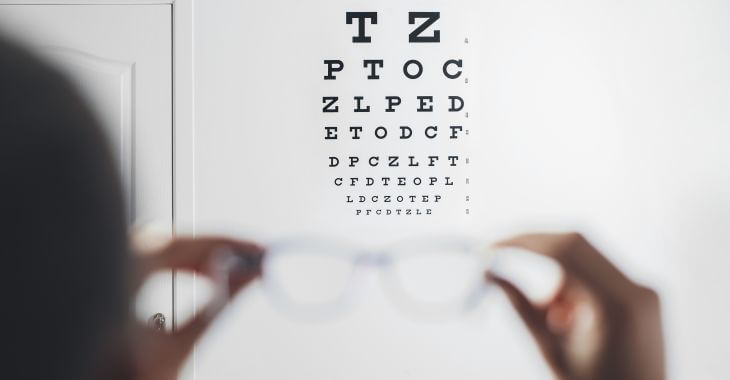What Are the Different Lasik Types?

Are you tired of wearing glasses or contacts? If you have poor vision, relying on corrective lenses or glasses can be frustrating. Corrective eye surgery with LASIK can give you back your vision and freedom. If you are ready to explore surgical vision correction, it is important to know the types of LASIK surgery available.
What Is LASIK Eye Surgery?
Abnormalities within the eye can result in nearsighted or farsighted vision problems, as well as astigmatism. When the cornea is unable to bend light in the right arch, vision problems can follow. Laser-assisted in situ keratomileusis (LASIK) is a corrective eye surgery that uses lasers to reshape the cornea.
Glasses or contacts can correct vision, but you need to wear these devices. With LASIK, the problem is corrected at the source, freeing patients from the need to wear corrective vision devices. Since there are different vision problems, there are also different LASIK types to provide the right vision correction.
Types of LASIK Eye Surgery
The patent for LASIK corrective eye surgery was obtained in 1989. The surgery has changed immensely over the last 30 years as technology improves. The basic LASIK surgery only corrected certain types of vision problems, but now there are many types of LASIK available for most types of vision loss.
- Standard LASIK
- The conventional or standard LASIK procedure creates a flap in the cornea to access the tissue underneath. Using a laser, the tissue is reshaped to improve the way light is arched to the retina to improve vision. Standard LASIK uses a tiny blade called a microkeratome to create the cornea incision.
- IntraLASIK
- Bladeless, or IntraLASIK, performs the same procedure as standard LASIK, but without the microkeratome. Instead, a femtosecond laser is used to create the flap in the cornea.
- Photorefractive Keratectomy (PRK)
- In some patients, the cornea is too thin to perform a standard LASIK procedure. The flap created can result in dangerous complications for patients with thin corneas. The photorefractive keratectomy (PRK) procedure does not use a flap – the entire layer of cornea is removed to access the eye tissue for correction.
- LASEK (Laser Epithelial Keratomileusis)
- If you have thin or flat corneas, one of the LASIK types available is LASEK. This procedure uses an instrument called a trephine or microkeratome to move the cornea aside to complete the laser treatment on the eye tissue. This can protect the cornea from complications during recovery.
- Topography-Guided LASIK
- Some of the cutting-edge technology available can allow for a personalized approach to LASIK. Topography-guided LASIK uses advanced imaging software to map the specific shape and structure of the cornea. This allows for a more precise eye surgery correction for both eyes.
- Conductive Keratoplasty
- For some patients, correcting farsighted vision is their main concern. This is common in older individuals that must use reading glasses to see anything close. Conductive keratoplasty uses radiofrequency to reshape the cornea to only improve the ability to read or see close items.
- Monovision Surgery
- Another corrective eye surgery for older patients is monovision surgery. This LASIK option addresses the common age-related farsightedness and distance (nearsighted) problems. One eye is corrected for distance vision while the other eye is left nearsighted, improving both near and far vision.
- Custom LASIK
- While standard LASIK is a fine option for many people, it uses a basic technique on all patients to provide corrective eye surgery. Custom LASIK is an innovative approach to correcting vision which is personalized to the patient. This can achieve a greater level of vision correction for optimal results.
- Custom LASIK procedures use computerized analysis to determine the exact way each eye receives light. This technology is called wavefront and offers a more precise level of vision correction. Custom LASIK is the gold standard of eye correction surgery, with superior results and fewer risks of complications.
Is LASIK Right for You?
The advancements in the types of LASIK surgery have made it an option for almost everyone with vision problems. A few decades ago, only certain types of vision problems could be safely corrected with laser surgery. With all the different LASIK types now used, most people can qualify for LASIK surgery.
If you are nearsighted or farsighted, have an astigmatism or aging-related vision loss, LASIK has options to correct your vision. You no longer may need traditional glasses, contacts or reading glasses to see correctly. In some cases, LASIK can provide better vision than is possible when wearing corrective lenses.
LASIK surgery can often be completed in less than a half hour. Many LASIK procedures have minimal downtime – the recovery may differ depending on the type of LASIK performed.

For those who want to explore LASIK corrective eye surgery, there are many new options available. Even if you have been denied LASIK surgery in the past, there may be procedures that can fix your vision. Contact your local eye doctor that offers different LASIK types to find out which is right for you.
The information provided on this website, including text, graphics, images, and other materials, is intended solely for informational purposes and should not be used as a substitute for professional medical advice, diagnosis, or treatment.



)